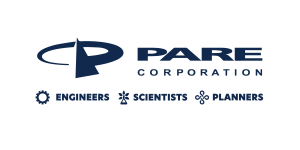Resource
New Emerging Fiber Optic Sensor Technologies for Levee and Dam, Predictive Maintenance, Safety, and Security Applications
Many industries maintain large structures where avoiding faults is critical to safety. Inspection and Structural Health Monitoring (SHM) are the main two methods for detecting structural flaws. SHM allows for preemptive and more precise inspection and repairs. Monitoring sensors have been used regularly for several decades on high-risk structures such as aircraft, wind turbines, power transformers, offshore platforms, large cargo ships, pipelines, power plants, bridges, buildings, and roller coasters.
Sometimes, inspection cannot catch issues that lead to catastrophe. In 2010, Caltrans found a crack on a steel member that was 14” long. This was on a fracture critical eyebar on the San Francisco Bay Bridge, which cause a five-day shutdown. Metallurgical reports of the steel showed this was there for several years and missed by the biennial inspections, though it was in plain sight. Caltrans installed SHM that within one month found a similar problem, which had gone unnoticed during 18 months of intense, nightly inspections.
The data gathered by structural monitoring solutions can provide additional, critical benefits. Fiber Optic (FO) cables are particularly useful for gathering geotechnical data on dams and levees. Together, this data can serve as building blocks for a digital twin of a given structure and can be used to verify construction and foresee the strength of a design. Monitoring will predict where and approximately when structures are likely to fail, which facilitates better emergency preparedness, faster response time, and more accurate risk analysis.
New FO systems simplify multidimensional monitoring and significantly reduce costs. Multiple sensor types can be installed in a single package with one, multi-fiber, high-throughput FO cable. Optical strain and temperature gauges take advantage of the cable itself as a monitoring tool. Other FO sensors are used for site security at nuclear power plants. And FO cables and sensors outlast electronic sensors by several decades.
As summarized above, this paper will exemplify dam and levee installations, identify potential FO dam and levee applications, project ROI from FO systems, and explore the emerging field of digital twins. We conclude that transitioning to fiber optic-based structural health monitoring has a negligible learning curve, boosts safety, and saves dam and levee owners/operators time and money.
































